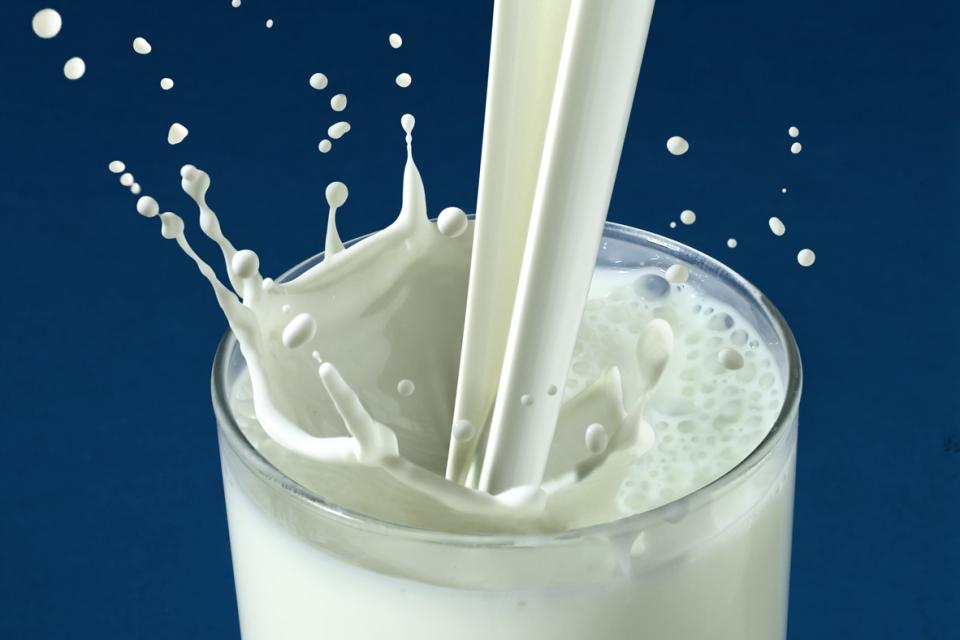What is homogenization?
Homogenization is a process used to mix and disperse milk fat globules in order to prevent milk from separating and give it a more homogeneous texture, hence the name of the process.1,2
Not to be confused with pasteurization, homogenization is a process that subjects the milk to high pressure to break up the fat globules.2 When the fat droplets become very small (less than 2 microns), they are covered by a membrane composed of lipids and proteins, as well as by casein micelles (particles formed from an aggregate of small molecules).2 This membrane prevents the fat from collecting at the surface of the milk and allows its permanent dispersion in a very fine emulsion.1,3 During homogenization, nothing is added or removed from the milk.2 In addition, only pasteurized milk can be homogenized because pasteurization denatures an enzyme that induces rancidity when pressure is applied.4 Therefore, raw milk is not homogenized.4
Why is milk homogenized?
Homogenization creates a more uniform texture, a more pleasant flavour and a whiter colour.1 In addition, homogenization makes the milk creamy and prevents a layer of cream from forming in the milk, a quality that made homogenized milk popular with consumers as early as the 1920.1 This process also gives milk a longer shelf life, better foamability and improved capabilities as a cooking ingredient.1,2,5 Most unskimmed milks sold in Canada are homogenized.
In practice
Characteristics of homogenized milk
The homogenization process is purely mechanical and does not affect the nutritional value of milk, but rather modifies its sensory characteristics.1
- Compared to non-homogenized milk, homogenized milk has a creamier, more uniform texture, a whiter colour, a more pleasant flavour and greater foamability.
- Homogenized milk also coagulates more easily, making the texture of some food preparations, such as puddings and white sauces, more viscous.
Homogenization and health: Separating myths from reality
There are unfounded beliefs about milk homogenization which speculate that changes to milk particles would have adverse health effects.5 However, no good quality scientific evidence supports these beliefs. Unlike pasteurized and homogenized milk, raw milk (i.e., unpasteurized and, therefore non-homogenized) would create significant risks of serious illness due to the presence of pathogenic bacteria.6
What are the impacts of homogenization on milk digestibility?
Studies have attempted to assess the effect of pasteurization and homogenization on the digestion of milk by measuring the impact of these processes on protein and fat globules.
In almost exclusively in vitro models, researchers found that protein in pasteurized and homogenized milk was digested more rapidly in the gut.3 Therefore, while some claim that homogenized milk has reduced protein digestibility, rather, scientific data seems to indicate that it is unchanged or even improved.7-9
Some concerns have been expressed about the increased digestion rate of homogenized milk particles caused by their reduced size.9 However, the speculated impacts of this size reduction are not reflected in the research, which shows that the complex interaction between various milk components would, in practice, cause the digestion rate of these fat globules to be similar to that of globules in non-homogenized milk.6,9
The research available therefore does not support the concerns about the impact of this process on the digestion of milk.5 In addition, due to a lack of human studies, it is not possible to determine whether these slight differences would have any real effects on the digestion of milk in humans. Factors other than homogenization should be considered when determining milk protein and fat digestibility, such as the type of dairy product, the animal species the milk comes from (e.g., cow or other mammal) or its milk fat content.7,10 Finally, other studies are needed to dissociate the effects of heat treatment from those of homogenization.
What about chronic diseases?
Some claim that modifications to milk particles could increase the risk of many chronic diseases and health issues because of the altered digestibility of these particles.5 Currently, very little research has been done on this subject, and no good quality studies have been conducted in humans. A review of the literature addressing this subject also highlights that there is a lack of good quality data on the impact of milk homogenization on health issues such as cardiovascular disease, diabetes and allergies.5 Given the lack of scientific evidence supporting the beliefs about homogenization and chronic diseases, there is no justification based on current evidence to avoid homogenized milk for health reasons.2,5
References
- Brown AC. Understanding Food: Principles and Preparation, 5th edition, Cengage Learning, 2015, Chapter 10, Milk, p. 217.
- US Food and Drug Administration. 2017. Raw Milk Misconceptions and the Danger of Raw Milk Consumption. www.fda.gov. Accessed December 20, 2021.
- Tunick MH et al. Effect of heat and homogenization on in vitro digestion of milk. J Dairy Sci 2016;99:4124-4139.
- Wiking L et al. Heat-induced changes in milk fat and milk fat globules and its derived effects on acid dairy gelation–a review. Int Dairy J 2022;127:105213.
- Michalski MC. On the supposed influence of milk homogenization on the risk of CVD, diabetes and allergy. Br J Nutr 2007;97:598-610.
- Government of Canada. 2013. Raw or unpasteurized milk. www.canada.ca. Accessed December 20, 2021.
- Ye A et al. Effect of homogenization and heat treatment on the behavior of protein and fat globules during gastric digestion of milk. J Dairy Sci 2017;100:36-47.
- Zhao L et al. Change in interfacial properties of milk fat globules by homogenization and thermal processing plays a key role in their in vitro gastrointestinal digestion. Food Hydrocolloids 2019;96:331-342.
- Liang L et al. Influence of homogenization and thermal processing on the gastrointestinal fate of bovine milk fat: in vitro digestion study. J Agric Food Chem 2017;65:11109-11117.
- Almaas H et al. In vitro digestion of bovine and caprine milk by human gastric and duodenal enzymes. Int Dairy J 2006;16:961-968.


